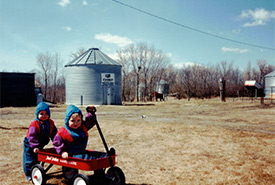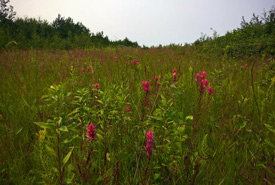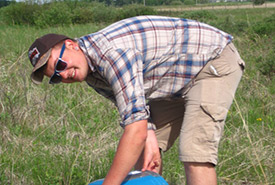Acknowledging change

Growing up on a farm in southwestern Manitoba, some of my clearest memories are of the extreme temperatures I experienced. (Photo courtesy of Steven Anderson)
“Everything changes and nothing stands still.” ~ Heraclitus of Ephesus, as quoted by Plato
Growing up on a farm in southwestern Manitoba, some of my clearest memories are of the extreme temperatures I experienced in that lovely continental climate. Whether it was walking 400 metres in –30 C temperatures to catch the bus, or trying to eat a Popsicle before the +40 C temperatures melted it off the stick, the yearly weather fluctuations not only provided some interesting challenges during my childhood, but they were also a fact of life. If someone had told 10-year-old me that, by the time I turn 60, conditions would be very different on my farm, I likely would not have believed them.
I think I really became concerned about climate change when I was in university. Learning about the impacts of climate change on all ecosystems really opened my eyes to how troubling the phenomenon is. When I began my master’s work in the tall grass prairie, the impacts of climate change on pollination were an important consideration, and I increasingly began thinking about climate trends.
Related blog posts

Tall grass prairie, Interlake (Photo by NCC)
I recently began working as the natural area conservation planner for the Nature Conservancy of Canada's (NCC's) Manitoba Region. One of my main duties is updating our Natural Area Conservation Plans in light of the effects of climate change, so I think this is the most climate-focused I have ever been!
Since the late 1800s, the Earth's global surface temperature has increased by about 0.85 C, and it is predicted to increase by another 4.8 C by 2100 if greenhouse gas emissions remain at their current rates. It is important to remember that this is a global average.
Climate change is predicted to increase temperatures more at extreme latitudes (toward the North and South Poles) than near the equator. For example, temperatures are predicted to increase by almost 7 C on Ellesmere Island, while temperatures in southern Manitoba are predicted to increase closer to the global average, according to Climate Atlas Canada.
In addition, an average increase in temperature means that the frequency of extreme heat events will increase, while that of extreme cold events will decrease. In southern Manitoba, based on current greenhouse gas emissions, Climate Atlas Canada predicts an increase in the number of 30 C days from 11 per year to 48 per year and a decrease in the number of –30 C days from nine per year to one per year.

Climate change is predicted to alter not just temperatures but precipitation as well. (Photo by Pixabay)
Climate change is predicted to alter not just temperatures, but precipitation as well. While many equatorial regions are expected to experience decreases in annual precipitation, Canada overall is expected to face increases. However, this increase in precipitation is unlikely to be consistent throughout the year.
According to Climate Atlas Canada, current models predict an increase in spring and winter precipitation, but a decrease in summer precipitation. These trends, combined with increased temperatures, may spell some concern for the future. An increase in summer droughts, along with higher temperatures, is likely to increase the risk of fires (a trend we may already be beginning to see). Increased spring and winter precipitation, combined with warmer temperatures, may increase the risk of flooding throughout Manitoba.
The predicted impacts on biodiversity are complex, and I’ll admit that I am only beginning to scratch the surface. In my next post, I will discuss how the above changes to our climate may affect human activities in Manitoba. Then, in a few months, I plan to write about some of the changes that NCC’s Manitoba Region may be implementing to adapt to our changing climate.
NCC’s adaptive management approach to conservation allows us to make changes to our Natural Area Conservation Plans as new information and resources become available. While I suspect that my Popsicle struggles will continue to be an issue when I’m 60, I have hope that I will still be able to enjoy them in a land flourishing with biodiversity.


